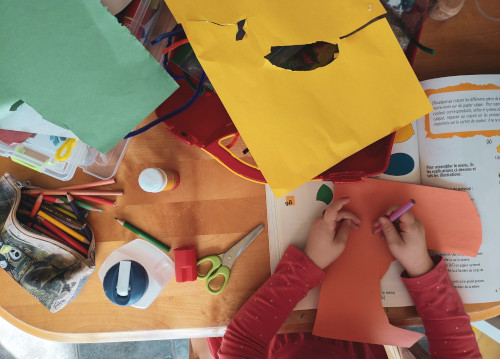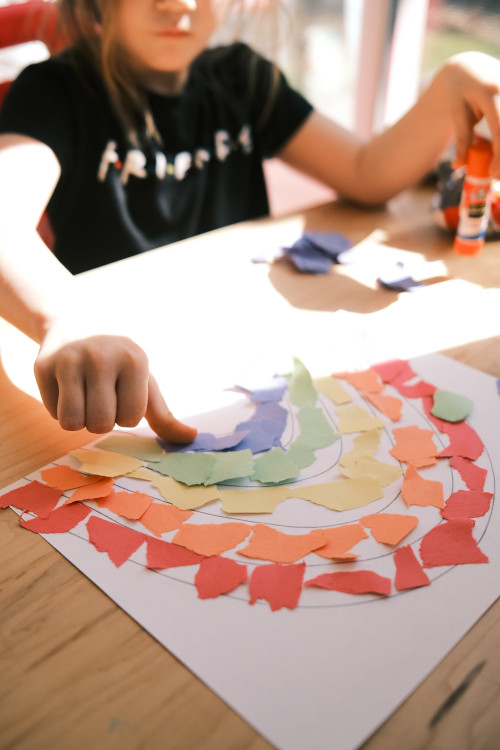
If you teach children how to do collage, it will open up a whole new world of possibilities to them. It might also keep them occupied and happy for hours on end!
There are many different approaches that are possible with collage. Some of them are kid-friendlier than others. Here are some suggestions for types of collages that are particularly well-suited for young people.
Paper Collage

The paper collage is one of the easiest and neatest types of collages that kids can make. To get them started, simply give them a selection of colored papers to work with, plus a pair of scissors and a bottle of glue for each child. I suggest doing a demonstration to show the kids some of the things that are possible with this media; show them how to choose a paper for their background, and how they can cut paper into interesting shapes and glue the paper pieces onto the background.
Picture Collage
A picture collage is similar to a paper collage, but instead of starting out with ordinary colored paper, you can use pictures from magazines, or perhaps actual photographs, instead. You could also use images from old greeting cards, old calendars, used wrapping paper, damaged books, etc.
Nature Collage
Teach the kids how to collect, press and dry natural materials such as flowers, leaves, stems and foliage. Then when the materials are dry, you all can make them into beautiful natural collages.
Fabric Collage
A fabric collage is a fantastic way to use up fabric scraps, and also scraps of lace, ribbon, felt, buttons and trim.
My first collage was a fabric collage, and I was probably around 7 or 8 when I made it. I loved it, but even now I remember how I was a little disappointed with the stiffness of the craft glue that I used; it caused the fabric to lump up and get hard.
To solve this issue creates additional dilemmas; the solution would be to use a dedicated fabric glue such as Guterman’s Creativ. However, that is not a glue that I recommend for kids. Therefore I suggest trying this type of project with older kids who can be trusted with a grown-up glue — pre-teens, tweens, and teens.
It’s a good idea to read them the instructions and impress on them the correct way to use the glue for best results. Also, be sure to have them work in a well-ventilated space, and make sure to keep tabs on how their work progresses.
Trash to Treasure Collage
You can raid the recycle bin, or maybe even the trash can, to create this type of collage. I already mentioned lots of ways to use scraps and leftovers in your collages; you can take that to the next level with this type of collage. Maybe you could build a collage out of candy wrappers, produce bags, cereal boxes, old printouts, magazine clippings, and / or plastic bags. Challenge your kids to be creative with this, and see what they come up with. They might just surprise you with their artistry!
Noodles and Beans Collage
I’ve seen many elementary-schoolers make this sort of collage, where they create a picture using beans, rice, noodles and assorted other dried foods as their media.
I’m not a fan of this type of collage, because it wastes food and it also teaches kids to waste food. Also, because it is not a permanent media; the beans are prone to popping off from the picture, and sooner or later, you might have pests nibbling at the collage if you try to keep it long-term.
Instead of this type of collage, I suggest trying the “trash to treasure” collage above, which encourages kids to think more sustainably in their approach to using resources.
More Ideas for Creative Collage Materials
This brief list barely scratches the surface of all the things that are possible to do with collage. I’ve written a longer list of possible creative collage materials you can use. Not all of these materials are kid-friendly (for example, I don’t suggest glitter if you can avoid it!) so use your good judgment. Even so, many of these materials would be wonderful for kids to work with.
Happy collaging!
By Amy Solovay
This page was last updated on 10-31-2021.
collage for kids, collage art, collage ideas, collage instructions